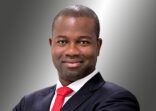Wealth management in Asia is becoming a crowded field, Liem told Fund Selector Asia. However, certain sectors, such as the mid-tier space, are underserved.
“People that can’t get what they want from a commercial bank but do not meet the criteria of private banks, that’s a lucrative unserved sector.
“Since the financial crisis, the client has evolved but some of the wealth management businesses have had difficulty evolving with clients. There may be an excess supply [of wealth managers], but they are not really fulfilling the needs of the available client base.”
Tightening regulations are playing a role. Liem said even opening a bank account with an investment platform for a client is getting difficult, largely due to excessive documentation.
“Sometimes it’s a little ridiculous. One example is that regulators ask for a cv from a client who is retired.”
Moreover, the implementation of FATCA is causing some banks to reject smaller clients because of rising administration and compliance costs.
As an external asset manager, TTG doesn’t hold client assets but partners with banks.
“There’s a chance that your existing partner may not work with you in the future due to FATCA,” he said, adding that stricter regulations will weed out weaker players.
From broker to EAM
Liem leads fund selection, meeting with fund managers and doing fund due diligence. He then presents his selections to the investment committee, which makes final decisions.
Currently 250 funds are on TTG’s approved on fund list. Although the firm typically holds a fund investment for at least one year, Liem meets weekly with managers to get to know new products.
TTG is a Hong Kong firm that began life as a broker serving expatriate clients. Around 2000, the firm moved into an external asset management. TTG partners with private banks or insurance companies to help HNWI clients put together a portfolio.
The average client has between $250,000 and $500,000 in assets. About 80% of assets are invested with third party fund managers and the rest is in direct equity or direct bond.
Discretionary mandates are 80% of the business, Liem said. Most clients come from referrals and half the client base is expatriates in Hong Kong.
“We explored [China mandates] in the past, but the discretionary model doesn’t really work with mainland clients. A lot of Hong Kong firms that do business with China clients usually have a middle person in China called a `channel’. But our model doesn’t focus on commission, so we are not really channel friendly.”
Rollover analysis
Liem describes portfolio construction at TTG as a multilayer exercise.
The client’s investment objective and risk analysis – aggressive, balanced or conservative – is determined and a portfolio is constructed. Fund selection comes next, and part of the process is using platforms from Morningstar and Bloomberg for product analysis.
“The first thing to focus on is the consistency of style of the manager compared with the underlying benchmark, especially if looking at a traditional long fund manager.
“Next would be the stability of the manager from a risk and return perspective. Unlike firms that focus on return and volatility, we focus on rollover analysis. We try to understand how fund manager performance is over a certain period of time in rollover manner.
“In practice, when we get market corrections clients get anxious, so we try to simulate that situation. We want to know from a rollover perspective what volatility we should anticipate. When we put a manager into the overall portfolio, what would be the correlation between other managers in the portfolio?”
“The challenge is that people like to trade a lot, but every time you make significant changes to portfolio composition, you reset the duration because you’re holding a new portfolio. So we look at our portfolio and manager selection from that position.”
Infrastructure theme
A preferred theme this year is global infrastructure, which is sharply different from emerging market infrastructure, Liem said.
“With EM infrastructure, people are still building roads so it is more of a development project. Developed market infrastructure is usually renewal or rebuilding, so the demand is already proven.”
TTG also likes managed futures as a diversification play. In 2015, investor sentiment seems to be directly linked to divergence in central bank policies, he said. Discussion on rate hikes will send asset classes up or down in tandem.
“Bonds and equities tend to move together in this environment, so managed futures are one of our favourites this year for portfolio diversification.”
















